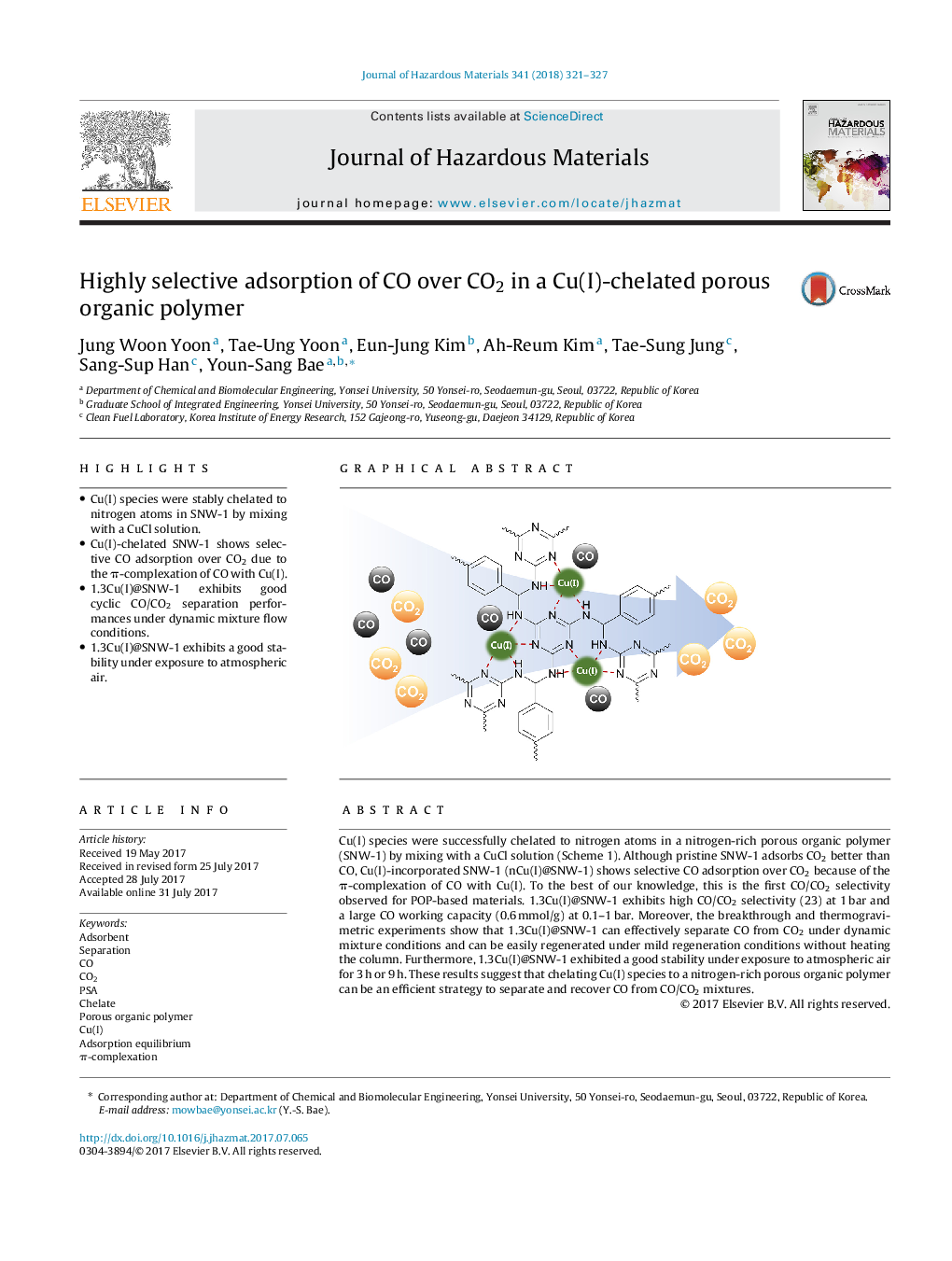| Article ID | Journal | Published Year | Pages | File Type |
|---|---|---|---|---|
| 4979276 | Journal of Hazardous Materials | 2018 | 7 Pages |
â¢Cu(I) species were stably chelated to nitrogen atoms in SNW-1 by mixing with a CuCl solution.â¢Cu(I)-chelated SNW-1 shows selective CO adsorption over CO2 due to the Ï-complexation of CO with Cu(I).â¢1.3Cu(I)@SNW-1 exhibits good cyclic CO/CO2 separation performances under dynamic mixture flow conditions.â¢1.3Cu(I)@SNW-1 exhibits a good stability under exposure to atmospheric air.
Cu(I) species were successfully chelated to nitrogen atoms in a nitrogen-rich porous organic polymer (SNW-1) by mixing with a CuCl solution (Scheme 1). Although pristine SNW-1 adsorbs CO2 better than CO, Cu(I)-incorporated SNW-1 (nCu(I)@SNW-1) shows selective CO adsorption over CO2 because of the Ï-complexation of CO with Cu(I). To the best of our knowledge, this is the first CO/CO2 selectivity observed for POP-based materials. 1.3Cu(I)@SNW-1 exhibits high CO/CO2 selectivity (23) at 1Â bar and a large CO working capacity (0.6Â mmol/g) at 0.1-1Â bar. Moreover, the breakthrough and thermogravimetric experiments show that 1.3Cu(I)@SNW-1 can effectively separate CO from CO2 under dynamic mixture conditions and can be easily regenerated under mild regeneration conditions without heating the column. Furthermore, 1.3Cu(I)@SNW-1 exhibited a good stability under exposure to atmospheric air for 3Â h or 9Â h. These results suggest that chelating Cu(I) species to a nitrogen-rich porous organic polymer can be an efficient strategy to separate and recover CO from CO/CO2 mixtures.
Graphical abstractDownload high-res image (114KB)Download full-size image
